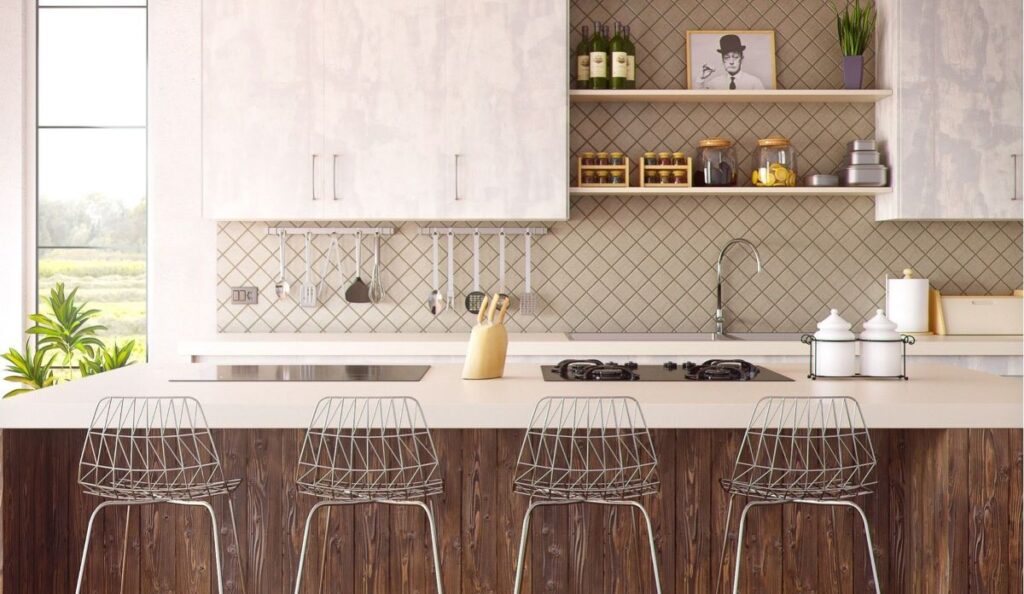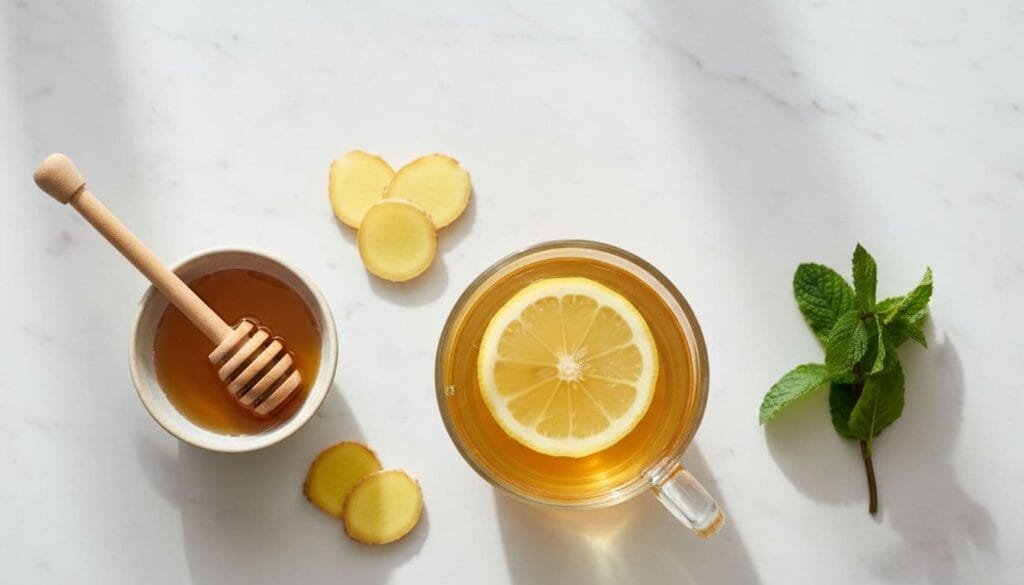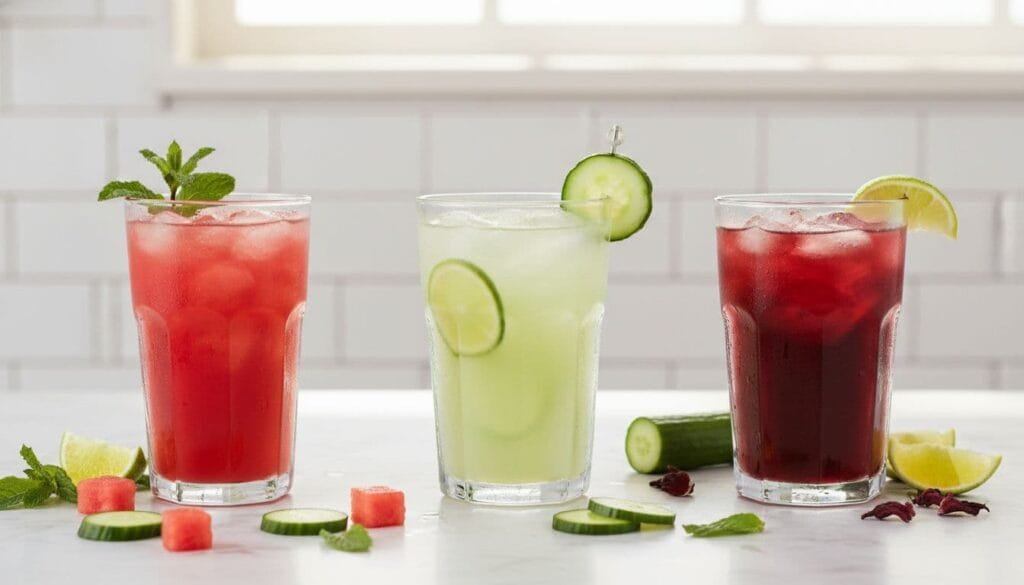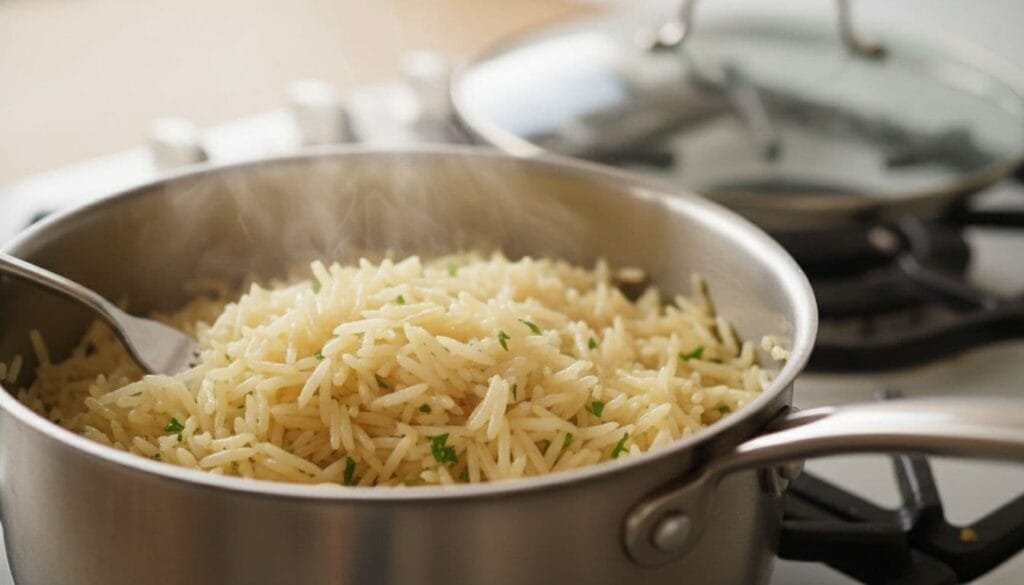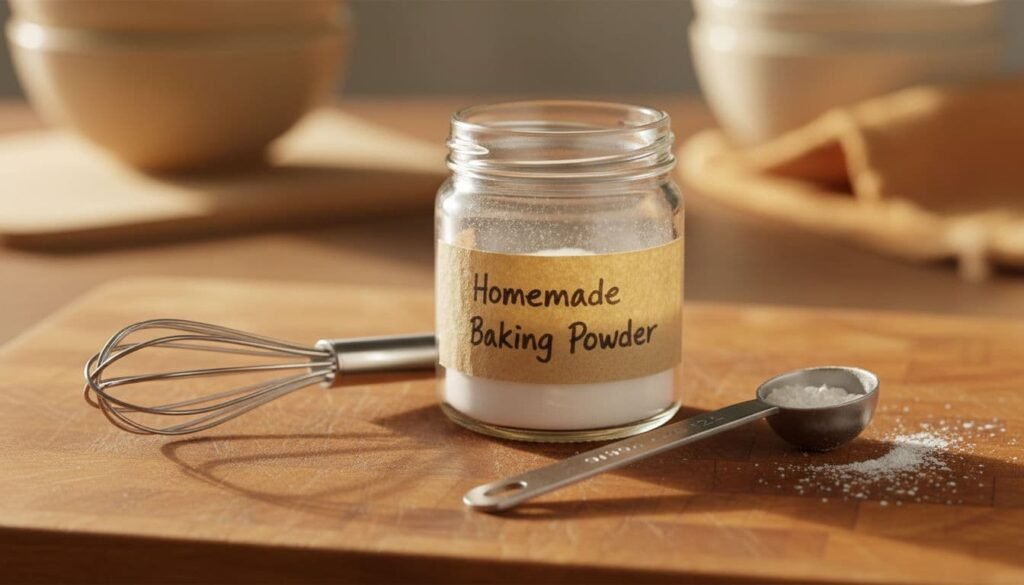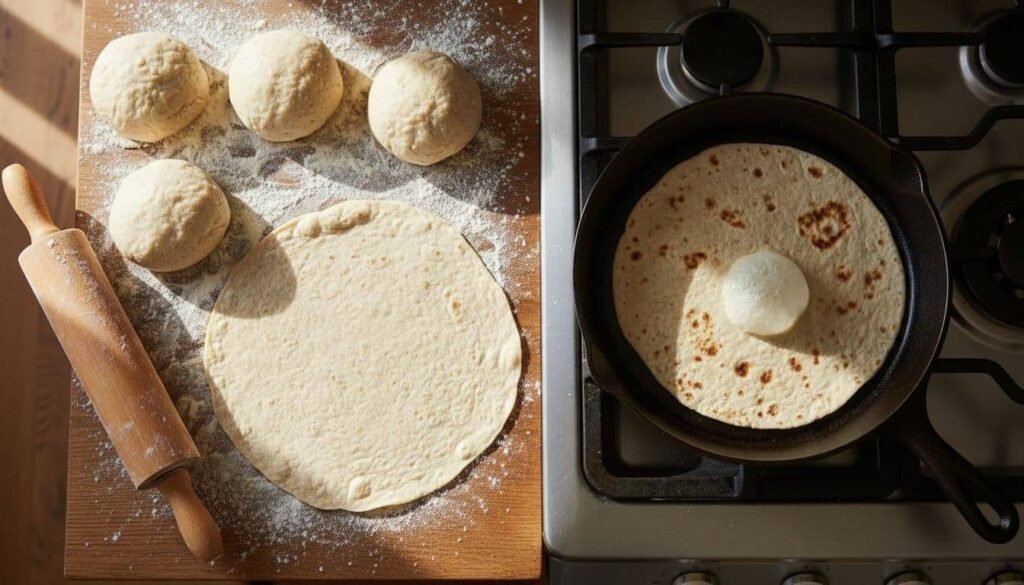A Homemaker’s Guide: Navigating the Art and Essentials of Culinary Mastery In the Kitchen
Welcome to the ultimate kitchen and homemaking guide, where we unravel the art of cooking, the beauty of kitchen organization, and the essentials of a happy home.
- The Kitchen's Evolution:
- The Benefits of Home-Cooked Meals: Health, Family, and Connection
- Cooking with Kids: Fun and Safe Ideas for the Whole Family
- The Importance of Meal Planning for Busy Families
- The Art of Organization: Tips and Tricks for a Tidy Kitchen
- Cooking Techniques: Mastering the Basics and Beyond
- Cookware and Equipment: Choosing the Best Tools for Your Kitchen
- Culinary Safety Tips: Keeping Your Kitchen Safe and Sanitary
- Frequently Asked Questions: Your Top 7 Queries Served on a Silver Platter
- In Conclusion
Picture this, you walk into your home after a long day, and the first thing that greets you is the inviting aroma of a simmering pot on the stove, the delicious scent of garlic and onions sautéing in a sizzling pan, mingling with the sweet, spicy smell of cinnamon wafting in from a freshly baked apple pie.
The kitchen is more than just a room; it’s the heart of a home. It is where meals are lovingly prepared, and where we nourish both our bodies and our relationships.
Imagine the laughter and chatter resonating within these walls, where meals are shared, stories are told, and memories are created. The kitchen is where your children learn about cooking and life. It’s where you teach them about family traditions and cultural heritage, where they learn the importance of sharing and caring.
- The kitchen is a place of growth, where raw ingredients transform into nourishing meals, and individuals evolve into families.
- It’s a place of learning where generations of culinary wisdom are passed down, and new recipes are continually crafted and perfected.
- It’s a place of joy where celebrations are prepared, the first taste of a new recipe brings a smile, and the simplest of meals can turn into the most memorable occasions.
Whether you’re a culinary maestro, a bustling parent constantly on the move, or a fledgling cook dipping your toes into the delectable world of cuisine, there’s a treasure trove of knowledge I’m excited to share with you on this page, as well as many others over the coming months and years. We delve deep into various topics, from the art of healthy cooking and kitchen organization to safety essentials, cooking with your little ones, handy cooking tips, innovative techniques, delicious recipes, and the lowdown on cookware and equipment.
Are you set to embark on this enthralling journey with me through the fascinating realms of kitchen and homemaking?
The Kitchen’s Evolution:
In the early 1900s, the kitchen was a secluded place primarily utilized for practical purposes. As we journey through time, we stumble upon a fascinating narrative of how the kitchen has evolved, rooted in the changes in societal norms, technological advancements, and shifts in family dynamics. Let’s embark on this culinary expedition together.
From Functional to Focal: The Evolution of the Family Kitchen – A Timeline
The kitchen has always been the heart of the home, but its purpose and design have dramatically changed over the years. Let’s take a chronological journey through the evolution of the kitchen from the early 1900s to the present day. You can also learn more about the history of the kitchen here.
1900 – 1920: The kitchen space was primarily utilitarian during this era. It was a separate and secluded room mainly used for cooking and cleaning.
1920 – 1940: Technological advancements brought electricity and running water into homes. This increased household efficiency and sparked a shift in kitchen designs towards a more modern aesthetic.
1940 – 1960: Post World War II, kitchens became more open and family-friendly. The emergence of new appliances changed everything about kitchens, ultimately making them more functional and comfortable.
1960 – 1980: Kitchens of this era saw significant changes with the introduction of microwaves, dishwashers, and other advanced appliances. The kitchen became a social hub, blending cooking and entertaining into one space.
1980 – 2000: This period witnessed the rise of the “gourmet” kitchen. High-end appliances, granite countertops, and custom cabinetry became kitchen standards. The open kitchen trend continued, integrating the kitchen with the living space.
2000 – Present: Modern kitchens blend functionality and aesthetics with smart appliances and energy-efficient designs. They have become multipurpose spaces, serving not just as a place to cook but also as a place to socialize, work, and entertain.
“Kitchens should be designed around what’s truly important – fun, food, and life.” – Daniel Boulud, French Chef.
From being a hidden room to becoming an integral part of the household, the humble kitchen has come a long way. This evolution, deeply rooted in technological advancements and societal shifts, has made the kitchen not just a place for cooking but a space around which family life revolves.
Kitchens have come a long way in at least four areas.
- Prominence in Home Design: While kitchens were once tucked away and hidden in many homes, they’ve become more central and open in design, often serving as the main gathering space.
- Versatility: Beyond just cooking, kitchens have evolved into multipurpose spaces, serving as dining areas, informal lounges, homework stations, and more.
- Bonding Zone: The kitchen isn’t just about food. It’s where families come together, share their day, celebrate occasions, or even comfort each other. It’s become a hub of emotional bonding.
- Aesthetic Importance: While “luxury” might be too strong a word, the attention given to kitchen design, décor, and aesthetics in modern times cannot be ignored. Homeowners often prioritize the look and feel of the kitchen, given its prominence in daily life.
So, we raise our glasses to the humble yet remarkably efficient kitchens of yesteryears.
The Benefits of Home-Cooked Meals: Health, Family, and Connection
Imagine sitting around a dinner table with your family, the aroma of a home-cooked meal filling the room, and the sound of laughter and shared stories filling the air. Sharing meals around the dinner table is fundamental to any healthy family. But the benefits of home-cooked meals go beyond just creating a warm, family atmosphere.
Home-cooked meals enjoyed with family positively impact your health, strengthen family bonds, and deepen your connections with loved ones. Let’s explore these benefits in more detail.
Health: Nourishing Your Body and Mind
When you cook at home, you have complete control over what goes into your meals. You’re the master of your kitchen, and you get to decide how much salt, sugar, or fat goes into your dishes. This control can lead to healthier eating habits and better overall nutrition. Isn’t it comforting to know that you are nourishing your body with the finest ingredients available?
- Nutrition: Home-cooked meals tend to be more nutritious. You can load your dishes with fresh fruits, vegetables, lean proteins, and whole grains. These are the building blocks of a balanced diet.
- Portion control: Eating out often means super-sized portions. But when you cook at home, you can control how much you serve and eat, helping to prevent overeating.
- Food allergies and dietary restrictions: If you or a family member has a food allergy or dietary restriction, home cooking allows you to tailor meals to these needs, ensuring everyone can enjoy a safe and delicious meal.
Family: Strengthening Bonds and Building Memories
Home-cooked meals provide an excellent opportunity to spend quality time with your family. It’s more than just eating together; it’s about creating and sharing experiences. Cooking with your kids, for instance, can be a fun learning experience. It can teach them essential life skills and create memories that last a lifetime. Remember, the kitchen is the heart of the home.
- Quality time: Preparing and eating meals together gives you the opportunity to interact, communicate, and bond with your family daily.
- Teaching opportunity: Cooking is an essential life skill. When you cook with your kids, you teach them how to be self-sufficient and make healthy choices.
- Memory-making: The kitchen is a place where memories are made. From holiday baking to Sunday brunches, these moments create memories your family will cherish forever.
According to a survey, 77% of Americans prioritize healthy eating, but only 29% cook at home daily. It can be challenging for some families to cook at home. While true, make every possible effort to cook and enjoy meals at home with loved ones. Don’t waste the opportunity!
Connection: Celebrating Traditions and Cultures
Cooking is a wonderful way to explore and celebrate your cultural heritage. From traditional recipes passed down through generations to new dishes inspired by different cultures, food brings people together. It invites conversation, fosters understanding, and forms a connection that transcends the dining table. Can you think of a better way to connect with your roots and share your culture with your loved ones?
- Preserving traditions: Food is often central to cultural and family traditions. Cooking traditional meals at home helps preserve these customs and pass them on to future generations.
- Discovering new cultures: Trying recipes from different cultures can expand your culinary horizons and teach you and your family about the diversity of food around the world.
- Building connections: Sharing meals is an act of love and connection. It’s a time to talk, share, and create lasting bonds.
So, are you ready to unlock the full potential of your kitchen? The benefits of home-cooked meals are profound and multifaceted, offering health advantages, family bonding opportunities, and cultural connections. Remember, every time you cook, you’re not just making food – you’re creating experiences, memories, and connections that can enrich your life and the lives of those you love.
Cooking with Kids: Fun and Safe Ideas for the Whole Family
Engaging your little ones in the kitchen can be an excellent opportunity for bonding, education, and fun. However, ensuring these activities are exciting and safe for everyone is essential. From age-appropriate tasks to kid-friendly recipes, let’s dive in and explore how you can create memorable culinary experiences with your children.
Why Cooking with Kids Matters
Inviting your children into the kitchen does more than keep them busy. It’s an avenue for them to learn essential life skills such as healthy eating, following instructions, and measuring ingredients – skills they’ll find handy as they grow older. Plus, it’s a chance to spark creativity as they experiment with flavors and textures.
Safety First: Ensuring a Secure Kitchen Environment
Before embarking on this culinary journey with your children, it’s crucial to establish a safe kitchen environment. Always supervise your kids, keeping in mind that adults should handle any sharp or potentially dangerous tools. Furthermore, remember to keep hot surfaces and ingredients out of their reach.
Age-Appropriate Tasks for Kids
Understanding what tasks suit your children’s age group can help foster a positive and productive experience. Here’s a handy guide:
| Age Group | Kitchen Tasks |
|---|---|
| Toddlers (2-3 years) | They can wash fruits, tear lettuce for salads, or stir ingredients in a bowl. |
| Preschoolers (4-5 years) | They can knead dough, mash potatoes, or measure and pour ingredients. |
| Elementary age (6-8 years) | They can use a butter knife to spread or cut, peel fruits and veggies, or help set the table. |
| Tweens (9-12 years) | They can start using a chef’s knife with supervision, cook simple dishes, or bake cookies and muffins. |
Kid-Friendly Recipes to Get Started
Start with straightforward recipes your kids will love to make and eat. Here are some ideas:
- Mini Pizzas: Let your children get creative by picking their own toppings and assembling their mini pizzas.
- Fruit Skewers: This no-cook recipe is perfect for little hands. Plus, it’s a healthy snack or dessert option!
- Homemade Granola: Simple to make and packed with nutrients, homemade granola is a great breakfast or snack option.
Remember: “The kitchen is the heart of the home. When you fill it with laughter, love, and learning, it becomes more than just a place for meals – it transforms into a sanctuary of shared memories and valuable lessons.”
Home Cooking: An Integral Part of Homeschooling
Do you know that kitchen time with your children can also play a pivotal role in homeschooling? Cooking is a hands-on activity that teaches them the fundamentals of healthy eating and incorporates math, reading, science, and creativity.
- Math: Measuring ingredients, timing cooking sessions, and calculating ratios provide practical math applications.
- Reading: Following a recipe encourages children to read and comprehend instructions.
- Science: Baking is a mini chemistry experiment where kids learn about reactions between different ingredients.
- Creativity: Designing a plate or experimenting with flavors, and cooking fuels their creative side.
And the best part? The results are immediate and delightfully edible! Cooking with kids can turn into a regular homeschooling activity that’s both fun and educational. The shared experience fosters a unique bond between you and your children, making the kitchen the perfect classroom.
As Julia Child once said, “No one is born a great cook, one learns by doing.” So why not let the kitchen be your children’s first step into the world of practical learning?
Remember, the goal here isn’t to rush the process but to enjoy the journey. Even if the kitchen gets a little messy or the dish doesn’t turn out perfect, what matters is the quality of time spent and the lessons learned. After all, each culinary adventure is a step towards raising confident, self-reliant kids who appreciate the art of cooking and healthy eating.
The Importance of Meal Planning for Busy Families
Imagine coming home after a long day, knowing that a home-cooked meal is just a few steps away in your kitchen. Sounds idyllic? This isn’t a dream. It’s the sweet reality of meal planning. By devoting just a little time each week to planning your meals, you can transform your kitchen experience, making it more efficient, less stressful, and more enjoyable.
Why is meal planning so essential? Let’s unbox the benefits:
- Nutrition: With meal planning, you have absolute control over the ingredients, ensuring that you and your family eat a balanced, nutritious diet.
- Time-Saving: No more last-minute scrambles. With a plan, you know exactly what to cook and when.
- Cost-Effective: Meal planning allows you to make the most of your groceries, reducing waste and saving money.
- Variety: Plan diverse and exciting meals, ensuring your family never gets bored of the same dishes.
Remember, meal planning isn’t about culinary perfection. It’s about making your life easier, your meals healthier, and your time in the kitchen more enjoyable.
Let’s look at some essential meal-planning strategies:
| Strategy | Description |
|---|---|
| Create a Master Recipe List | Start by making a list of your family’s favorite meals. This will be your go-to list when planning. |
| Consider Your Schedule | Plan meals according to your week. If you’re busy, plan simple meals. If you have more time, try a new recipe. |
| Make a Shopping List | Once you’ve planned your meals, create a shopping list. This ensures you have all the ingredients you need. |
In essence, meal planning is a vital tool in your homemaking toolkit. It helps you confidently navigate the kitchen, ensuring you always have a delicious meal ready for your family. So grab that pen and paper, and start planning!
The Art of Organization: Tips and Tricks for a Tidy Kitchen
Imagine walking into a kitchen where every utensil, pot, and ingredient has its special spot. Not only does it create a visually pleasing environment, but it also makes the cooking process smoother and more enjoyable. No more rummaging around for that elusive spice or baking tool! You can transform your kitchen into a more efficient, stress-free space with a few simple organization tips. Let’s delve into some practical ideas.
- Declutter Regularly: Discard items that you no longer use or need. An over-stocked kitchen can lead to chaos and confusion.
- Utilize Wall Space: Consider installing hooks and shelves on the wall for hanging pots, pans, and other utensils.
- Use Drawer Dividers: They help neatly organize utensils, cutlery, and spices.
- Group Similar Items: Placing similar items together makes it easier to find what you need when you need it.
- Label Everything: If you store food in jars or containers, labeling them can save you a lot of time and prevent mix-ups.
Cooking Techniques: Mastering the Basics and Beyond
Perhaps you’ve wondered how to perfect your sautéing or why your cakes never come out as fluffy as you’d like. Or maybe you’re a seasoned home cook looking to take your culinary skills to the next level. In either case, mastering essential cooking techniques is crucial. Let’s dive right into the heart of culinary art by exploring some of these techniques.
Sautéing
When you sauté, you cook food rapidly in a small amount of oil or fat at relatively high heat. Sautéing allows you to seal in the flavors of your ingredients, making it an excellent technique for cooking meats and vegetables.
- How to: Heat oil or butter in a pan until it’s hot but not smoking. Add your ingredients and stir them occasionally to ensure even cooking.
Baking
Baking might be the first cooking technique that comes to mind when you think of homemade cakes, cookies, and bread. It involves cooking food by applying heat from an oven.
- How to: Preheat your oven to the correct temperature, prepare your baking dish, and bake for the specified time. Ensure not to open the oven door too often, as it can cause your baked goods to fall flat.
Grilling
Grilling gives food a distinctive, smoky flavor that’s hard to replicate with any other cooking technique.
- How to: Preheat your grill. Place the food on the grill rack, then turn and move it as needed to ensure it’s cooked thoroughly and evenly.
“Cooking is an art, but all art requires knowing something about the techniques and materials.” – Nathan Myhrvold, co-author of Modernist Cuisine
Making Sauces
Sauces can elevate a simple dish to the sublime, and they’re not as intimidating to make as they might seem.
- How to: Depending on the type of sauce, you might need to heat, whisk, or blend your ingredients until they reach the desired consistency.
Roasting
Roasting involves cooking food slowly in an oven or on a spit. It’s a great way to bring out the natural flavors of meats and vegetables.
- How to: Season your food, then cook it in an oven or over an open flame until it’s done to your liking. It’s essential to rest your meat after roasting before you slice it to ensure juicy results.
| Cooking Technique | Best Used For |
|---|---|
| Sautéing | Meats, vegetables |
| Baking | Breads, cakes, cookies |
| Grilling | Steaks, burgers, fish |
| Making sauces | Pasta, meat dishes |
| Roasting | Chicken, beef, vegetables |
Remember, cooking techniques are tools in your culinary toolbox. As you practice and perfect each one, you’ll gain more confidence and flexibility in the kitchen.
A Grandmother’s Legacy: Passing Down Time-Honored Cooking Techniques
Just like the heartwarming scent of freshly baked cookies wafting through the air, the story of Grandma Lucy and her grandchild, Jamie, fills the heart with warmth. Cooking was more than just a necessity for Lucy; it was an art of love, an heirloom passed down through generations. And she was more than eager to share this treasure with Jamie.
“Cooking, my dear,” Grandma Lucy would often say, “isn’t merely about filling hungry bellies. It’s about nourishing souls, creating memories, and sharing love.”
Remember, cooking techniques are tools in your culinary toolbox. As you practice and perfect each one, you’ll gain more confidence and flexibility in the kitchen.
And so, under the golden glow of the kitchen lights, Jamie began to learn. First, it was the basics: how to chop onions without shedding a river of tears, how to whip up a perfectly fluffy omelet, and how to knead dough until it was smooth as silk. Then, as Jamie’s confidence grew, so did the complexity of their dishes.
But the method Lucy held closest to her heart was an old family secret – a special technique for preparing their traditional family dish, the savory beef stew. This technique was a labor of love, requiring patience and precision. Lucy would tenderly sauté the onions and garlic until they were caramelized to perfection, brown the beef chunks just right, and let the stew simmer on low heat for hours until all the flavors melded into a symphony of deliciousness.
| Technique Example | Description |
|---|---|
| Sautéing | Quickly frying the onions and garlic in a hot pan. |
| Browning | Sealing in the juices of the beef by cooking it quickly at high heat. |
| Simmering | Simmering the stew on low heat to allow the flavors to combine. |
Lucy’s lessons went beyond the stove. They were lessons about patience, hard work, and the joy of creating something out of love. These were lessons Jamie would carry forward not just in the kitchen but in life as well.
Ultimately, it wasn’t just a cooking technique that was passed down. It was a tradition, a legacy, and most importantly, a way to keep the family close, one delicious meal at a time.
The kitchen is a powerful place when it becomes a vessel for family traditions, stories, and recipes, passed down through generations, weaving the tapestry of our shared heritage.
Cookware and Equipment: Choosing the Best Tools for Your Kitchen
Embarking on the culinary journey is an art in itself, and just as any artist needs their tools, so does a home cook. The right cookware and equipment are the backbone of any kitchen. They aid in preparing delicious meals and contribute significantly to a seamless and enjoyable cooking experience. But with many options available in the market, choosing the best tools for your kitchen can be overwhelming. Let us break it down for you.
In 2019, the global cookware market was valued at $74.6 billion and is expected to reach $95.1 billion by 2025.
When shopping for cookware, you should first consider the material. The most commonly used materials include stainless steel, cast iron, and non-stick. Stainless steel is a popular choice due to its durability and versatility. It is ideal for browning, frying, and sautéing. However, its heat conduction is not as efficient as other materials. Cast iron, on the other hand, is excellent for heat retention and even cooking, making it perfect for tasks like searing or baking. Non-stick pans are great for low-fat cooking and are easy to clean, but they can’t withstand high heat and often contain toxic chemicals.
Green Cookware Vs. Toxic Cookware
As you navigate your culinary journey, you must be aware of the impact your cookware might have on your health and the environment. When choosing your pots and pans, not all materials are created equal. You might ask, why does it matter? The answer lies in the fact that some cookware can release harmful substances into your food during cooking. So, the question becomes: How can we ensure our cookware is safe and environmentally friendly?
Let’s compare the two sides of the spectrum: green or non-toxic cookware and the more conventional, potentially toxic cookware.
Green cookware is any cookware that is free of toxic materials and is manufactured responsibly, while toxic cookware refers to pots and pans that may release harmful substances into your food and the environment during their production or use.
Non-Toxic Cookware
Non-toxic cookware, also known as green or eco-friendly, is made from materials that do not leach harmful chemicals into your food as you cook. They are also produced in a way that ensures minimal impact on the environment. The most common materials used include:
- Stainless Steel: As mentioned earlier, stainless steel is a durable and versatile choice. It does not react with food or alter flavors.
- Ceramic: Ceramic pots and pans are non-reactive and often come with a non-stick surface that does not contain harmful PTFE or PFOA.
- Cast Iron: Cast iron pans are excellent for heat retention and even cooking. They’re virtually indestructible and become naturally non-stick with proper seasoning and care.
Toxic Cookware
On the flip side, some types of cookware may contain chemicals that could harm your health. This includes:
- Non-Stick: Although famous for their easy release and cleanability, non-stick pans often contain PTFE (Teflon) and PFOA, chemicals linked to various health issues.
- Aluminum: While lightweight and affordable, aluminum pots and pans can react with acidic or alkaline foods, causing the metal to leach into your food. The health impact of this is debated, but what isn’t debated is that using aluminum leads to more aluminum in your food, period.
Remember, the choice of cookware is personal, based on your cooking habits, budget, and health concerns. Make an informed decision, and remember that investing in good-quality pots and pans can significantly impact your culinary experience and health in the long run.
Essential Equipment for a Functional Kitchen
Your chosen equipment should align with your cooking style and the recipes you frequently make. Essential items include high-quality knives, a reliable set of measuring spoons and cups, and a good mixing bowl set.
Remember, it’s not about having all the fancy tools but the right ones that make your cooking process smoother and more enjoyable. Quality trumps quantity every time. Invest in a few pieces of good quality cookware and kitchen equipment that will stand the test of time.
Now, let’s dive into the ‘must-haves’ for a fully functional kitchen.
- Knives: A chef’s knife and a paring knife should be your starting point.
- Pots and Pans: A set comprising of a large pot, a skillet, and a saucepan is essential.
- Mixing Bowls: Opt for a set of stainless steel or glass mixing bowls in varied sizes.
- Measuring Tools: Measuring spoons and cups are indispensable for accurate cooking and baking.
- Cutting Board: Choose a sturdy and large cutting board. Chemical-free solid wood is preferred.
- Baking Sheets: Used not just for baking cookies but roasting vegetables, catching drips, and more.
- Utensils: Get yourself a set of heat-resistant cooking utensils like spatulas, spoons, and tongs.
Armed with these basics, you’re ready to conquer any recipe that comes your way. Happy cooking!
Culinary Safety Tips: Keeping Your Kitchen Safe and Sanitary
Imagine you’re in a symphony orchestra where the kitchen is your concert stage, utensils are your musical instruments, and recipes are your symphony notes. If you’ve ever found yourself humming along to the rhythm of your stove’s sizzling, you know that a harmonious kitchen equals a happy home. But like any good orchestra, harmony can be achieved only when safety and hygiene are in place.
So, let’s dive into some essential safety tips to keep your kitchen safe and sanitary.
1. Sharp Objects and Utensils
If mishandled, sharp objects like knives, forks, and graters can be more dangerous than fire. Here are some tips:
- Store Sharp Objects Safely: Knives and other sharp utensils should never be left where children can reach them. Always store them in a separate drawer or a knife block.
- Handle with Care: Always direct the cutting edge away from your body when using knives or other sharp objects. And never, ever try to catch a falling knife!
- Keep Them Sharp: Yes, ironically, a sharper knife is safer because it requires less force to cut, leading to less chance of the blade slipping.
2. Fire and Heat Safety
Regarding fire and heat, a little caution can prevent big disasters. Pay heed to these tips:
- Never Leave Cooking Unattended: An unattended stove is a recipe for disaster. Always stay in the kitchen when you’re cooking on the stovetop.
- Keep Flammable Items Away: Keep things that can catch fire – like dish towels, oven mitts, and paper, away from the stove.
- Turn Pot Handles Inward: Turning pot handles inward prevents them from being knocked over accidentally.
3. Food Safety and Sanitation
Food safety is a crucial aspect of kitchen safety. Prevent foodborne illnesses by following these guidelines:
| Tip | Description |
|---|---|
| Wash Your Hands Often: | Before and after handling food, always wash your hands thoroughly with warm soapy water. |
| Separate, Don’t Cross-contaminate: | Use separate cutting boards for raw meats and fresh produce to avoid cross-contamination. |
| Cook Food Thoroughly: | Use a food thermometer to ensure food is cooked to the right temperature. |
Remember, a safe kitchen is a happy kitchen! By observing these safety tips, you’ll create a harmonious culinary environment for you and your loved ones to enjoy.
Now, let me ask you: Isn’t it lovely to move in a kitchen that’s not just beautiful, but also safe and sanitary? Indeed, cooking becomes more pleasurable when we don’t just feed our bellies, but also our peace of mind.
So, go ahead! Conduct your kitchen symphony with confidence and joy, knowing that safety and sanitation are your trusted companions in this culinary journey.
Frequently Asked Questions: Your Top 7 Queries Served on a Silver Platter
- What are the essentials of a well-organized kitchen? Every kitchen tells a story, unfolding in the rhythm of chopping onions, the aroma of freshly baked bread, and the warmth of a simmering pot. The essentials of a well-organized kitchen lie in harmony and order, allowing you to waltz through your culinary ballet with ease. From your beloved wooden spoons to the cast-iron skillet, each item should have its own welcoming spot.
- How can I involve my children in cooking? Inviting your little ones into the kitchen is akin to opening a book of wonder, sparking curiosity, and nurturing growth. Start with simple tasks like washing vegetables or stirring the batter, gradually introducing them to the symphony of flavors and the joy of creating meals from scratch.
- What are some safety tips for the kitchen? In the heart of all homes, safety dances hand in hand with culinary delights. It is essential to keep sharp objects out of children’s reach, never leave cooking unattended, and ensure that your kitchen is a fire-safe zone. Remember, a safe kitchen is a happy kitchen.
- How can I hone my cooking skills? To journey into the world of cooking is to embark on a never-ending adventure. Hone your skills by embracing new recipes, exploring diverse cuisines, and learning from your blunders in the kitchen, for they are but stepping stones to your culinary masterpiece.
- Can you recommend some healthy cooking techniques? A healthy kitchen sings the melody of wholesome ingredients and mindful cooking techniques. Opt for steaming and roasting over deep-frying, embrace whole grains, and remember that a rainbow on your plate is nature’s way of creating a symphony of nutrients for your body.
- What cookware and equipment should I have? Every artist requires their tools, and a cook is no different. A set of good-quality knives, sturdy pots and pans, a reliable oven, and a cutting board are your canvas and paintbrushes. Choose your tools with care, for they become an extension of your culinary soul.
- Do you have any favorite recipes to share? The kitchen is a treasure trove of cherished memories captured within the heart of every recipe. From the comforting bowl of chicken soup to the celebratory birthday cake, each dish is a page in the story of your life. Stay tuned for our recipe section, where we share our favorite culinary tales with you.
In Conclusion
As we’ve navigated through the art and essentials of the kitchen and homemaking, it’s evident that the kitchen, much more than just a space, is a haven of creativity, nourishment, and bonding. From mastering the basics of culinary art to ensuring a clean and organized kitchen – every detail contributes to your homemaking journey.
Reflecting on the Journey
We have explored healthy cooking, realizing that nutrition doesn’t have to compromise flavor. We have shared ways to safely involve children in the process, turning culinary activities into an opportunity for learning and interaction. We have also delved into various cooking techniques and tips – each promising a unique story of taste and aroma.
Remember the importance of selecting the right cookware and equipment – as each tool, like a trusted ally, aids in our culinary conquests. Our foray into the vast array of recipes has shown that there’s always something new to try, always something exciting to bring to the table.
Let’s not forget the significance of organization and safety in the kitchen. They are the pillars that ensure our kitchen remains a joyous and secure space. By upholding these principles, we can confidently conduct our kitchen symphony.
Embrace the Kitchen Adventure
In the end, your kitchen is a canvas, and you are the artist. Embrace this beautiful adventure with your loved ones. Experiment with flavors and spices, try different cooking techniques, and create your own unique recipes. Remember, every meal prepared with love is a masterpiece.
So, let’s roll up those sleeves, don those aprons, and dive into the exhilarating world of kitchen and homemaking. Here’s to creating lasting memories with every meal we prepare!
As Julia Child once said, “The measure of achievement is not winning awards. It’s doing something that you appreciate, something you believe is worthwhile.”
Draw inspiration from these words and let your passion for cooking and homemaking shine. After all, the secret ingredient in every recipe is love.
Recent Culinary Posts…
